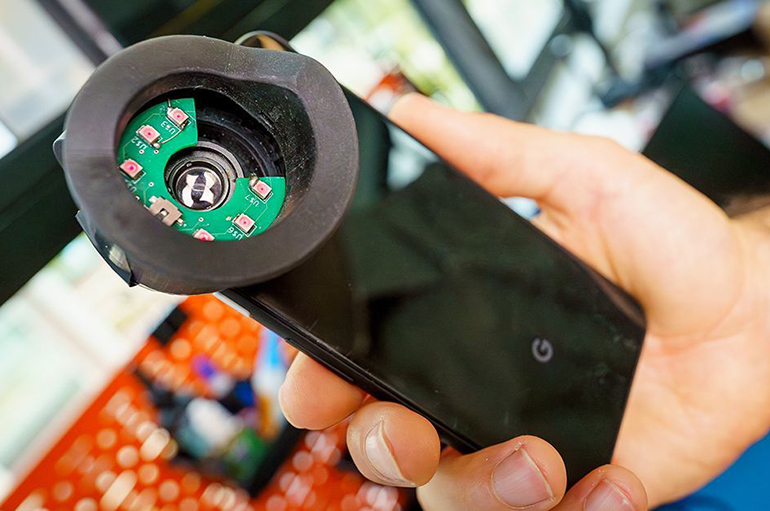A research team at the University of California San Diego have developed a smartphone attachment that can provide information on changes in pupil size, which can be used to assess neurological phenomena, such as traumatic brain injury and Alzheimer’s disease. Such changes in pupil size have been difficult to characterize in the past in those with a dark iris, which is more common in people with darker skin tones, because it can be challenging to distinguish between the iris and the pupil. This latest smartphone attachment fits over the camera of a smartphone, and uses a filter to restrict the light entering the camera to far-red light. This makes the iris appear lighter in the resulting images, and helps the technology to distinguish between iris and pupil, providing more robust diagnostics for those with dark eyes.
Changes in pupil size can offer information on a variety of neurological conditions, including traumatic brain injury and Alzheimer’s disease, but our natural diversity in terms of skin tone and melanin content in the iris has meant that for those with dark eyes, it can be difficult to get an accurate measurement in pupil size changes.
“There has been a large issue with medical device design that depends on optical measurements ultimately working only for those with light skin and eye colors, while failing to perform well for those with dark skin and eyes,” said Edward Wang, one of the leaders of this research. “By focusing on how we can make this work for all people while keeping the solution simple and low cost, we aim to pave the way to a future of fair access to remote, affordable healthcare.”
Engineers within ophthalmology have known that conventional cameras are not suitable for pupil size measurements in those with dark eyes for some time. One answer has been to use infrared cameras, but such cameras are typically only present on high-end smartphones, which limits the pool of people who could use such technology. This latest device works with a conventional smartphone camera, and instead uses far-red light, which is still within the visible spectrum and therefore detectable with a regular camera.
“The issue with relying on specialized sensors like an infrared camera is that not all phones have it,” said Colin Barry, another researcher involved in the project. “We created an inexpensive and fair solution to provide these kinds of emerging neurological screenings regardless of the smartphone price, make or model.”
The attachment is placed over the camera and then placed over the eye, where the camera flashes the eye with bright light and records video of the pupil movement. In tests so far, the device could assess pupil responses in a group of volunteers with different eye colors.
Study in Scientific Reports: Racially fair pupillometry measurements for RGB smartphone cameras using the far red spectrum
Via: University of California San Diego

